Category Archive for Art + Design
Travel Talk Tours Egypt review: Luxor’s ancient ruins! Karnak Temple, Nubian village dinner, Dahab beach resort.

“All the old paintings on the tombs
They do the sand dance don’t you know
If they move too quick (oh whey oh)
They’re falling down like a domino…”
Walking like an Egyptian, while in Egypt: goal unlocked, thanks to Travel Talk Tours!

Yukiro and I were invited to join their Felucca and Red Sea Odyssey tour, which took us to Egypt’s major archaeological sites. In our first review, we saw Giza’s pyramids and the Great Sphinx (the mythological creature with the head of a man, and body of a lion).
On the second day, we encountered more sphinxes… but this time, they had ram-heads and were sitting in a row!

At the end of Day 1 in Cairo, we boarded the Travel Talk Tours bus along with about 30 millennial travelers. We drove to Luxor, and spent the night in a nice hotel. The next morning, our tour group got up early to see the magnificent Karnak Temple.
Read on to see this fabulous cult complex dedicated to ancient Egyptian gods. We’ll also take you to a Nubian culture dinner, and hang with Bedouins in the beach town of Dahab.

Karnak Temple Complex sits on the east bank of the Nile, in Luxor (the city formerly known as Thebes). This spiritual site was dedicated to the god Amun-Re, but you’ll find tributes to other Egyptian gods and goddesses throughout.
A succession of pharoahs built the temple from the Middle to Late Kingdom (around 2055 BC to 100 AD).

There’s so much about Egypt that simply can’t be conveyed in photographs. The immensity of Karnak, for one: I was overwhelmed by the size and scale of these ancient monuments.
I learned from my guide that Karnak is the largest religious site ever constructed, spanning 200 acres. (We didn’t even get to see it in full, as travelers can only access the Precinct of Amun-Ra; the other portions are closed to the public).
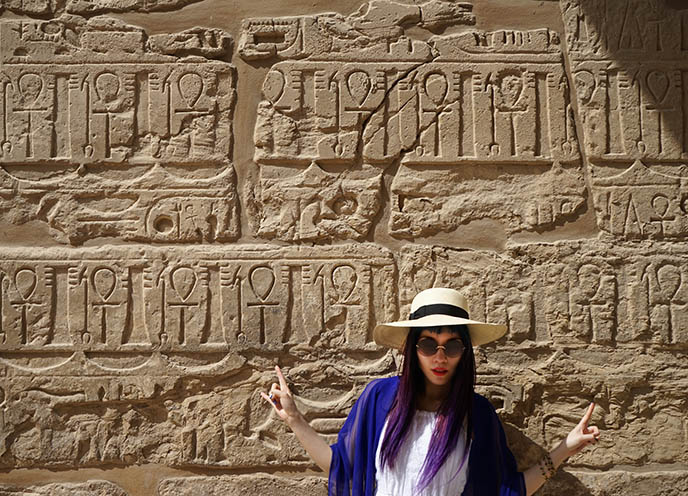
Thankfully, we had our Travel Talk Tours guide to show us the most fascinating parts of Karnak.
It doesn’t get much Gother than this: a wall of carved Ankhs! The Egyptian hieroglyphic is the symbol of life, and much-loved by Goths.
(I kept my face shaded from the sun with this Tenth Street Hats wide brimmed hat.)

This headless mummy-statue is extra Goth, clutching a double-ankh in his arms as he crosses into the land of the dead.
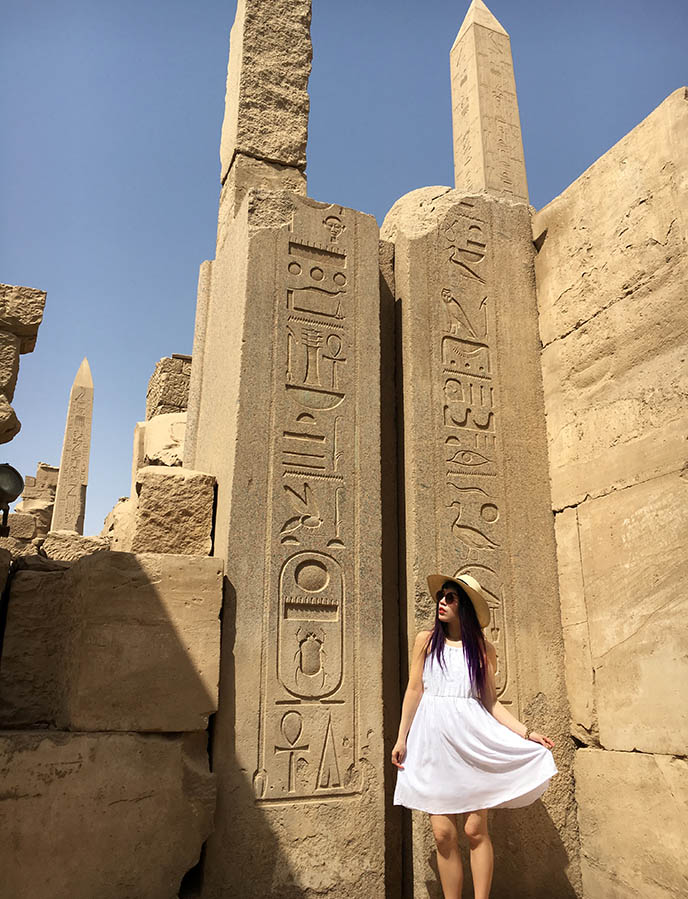
I felt like I was in a fantasy, standing beneath hieroglyphics and obelisks dating back thousands of years.
The tallest obelisk in Egypt once stood at Karnak, erected to honor Queen Hatshepsut. (My white halter resort dress is by UK Swimwear.)

There can be quite a lot of tourists at Karnak. We recommend going to the back areas, where there are fewer people and fascinating ruins like these.

The complex is filled with a diversity of artistic styles and architectural features. Hieroglyphs are carved all over. (Incredible how we didn’t know how to decipher the ancient writing until the discovery of the Rosetta stone.)
I hailed the hieroglyphics with my Alex Streeter Marquise scorpion ring, a design inspired by the Egyptians. My nail art is from Glam Nail Studio.

Our Travel Talk Tours guide struck a great balance between sharing historical information with us, and then giving everyone free time to explore and take photos. I let my imagination run free as we wandered.

These friezes in the Precinct of Amun Re have withstood centuries.

With primitive tools, the ancient Egyptians had the capacity to build structures that remain impressive today. Karnak features the first pylon, or giant gateway, and a wide variety of sandstone statues, pillars, and bas reliefs.
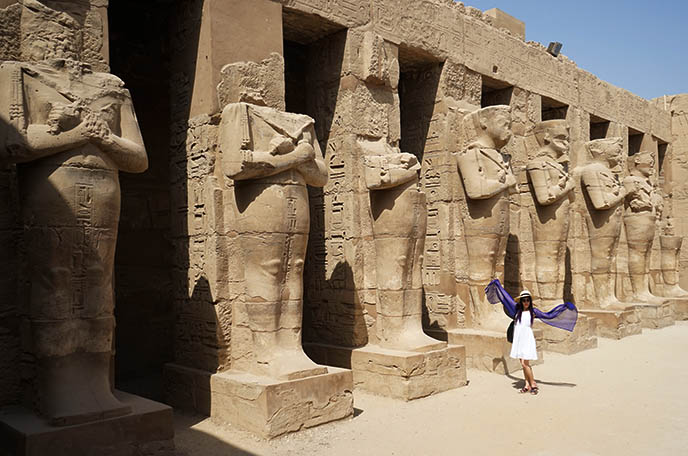
Feeling tiny next to this row of statues, honoring Pharoah Ramses II as Osiris, god of the underworld.

The song “Walk like an Egyptian” by the Bangles ran through my head, as I admired these carvings (they show people bringing offerings to the gods).
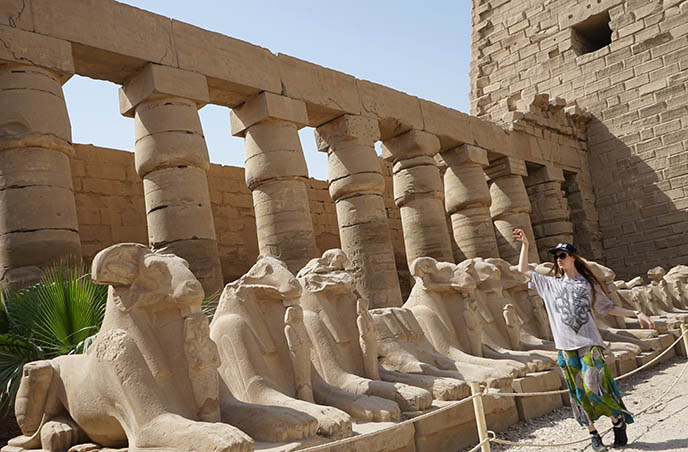
Karnak stands out for its Avenue of Sphinxes, which dates back to the era of Ramses II. This line of ram-headed sphinxes represents the god Amun. Each holds a small pharoah between their paws, symbolizing their protection.
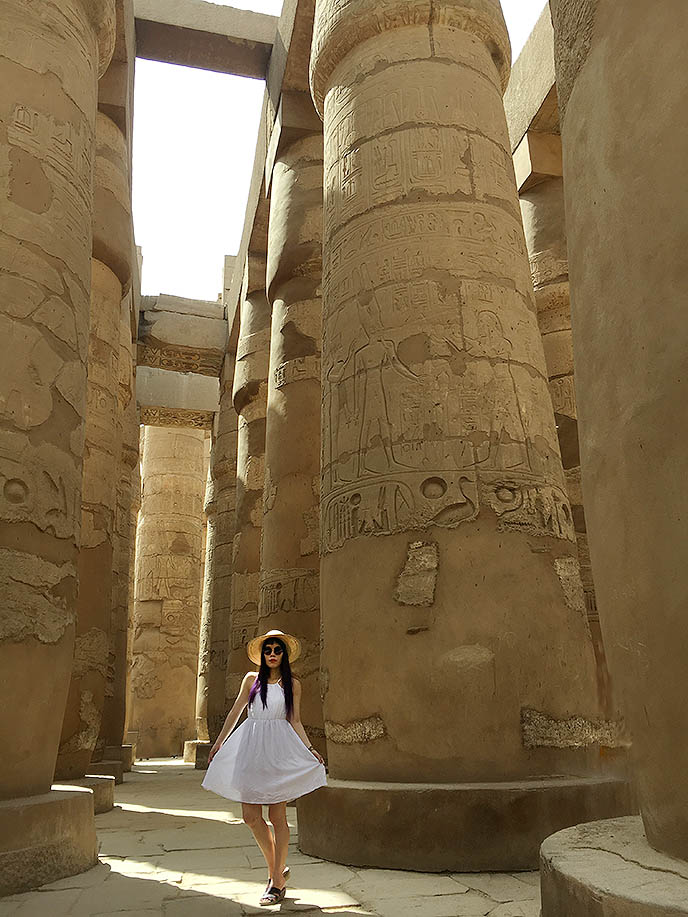
One of my favorite areas was the Hypostyle Hall in the Precinct of Amun-Re. There are 134 of these gigantic columns, each intricately carved and arranged in a 50,000 square foot hall.
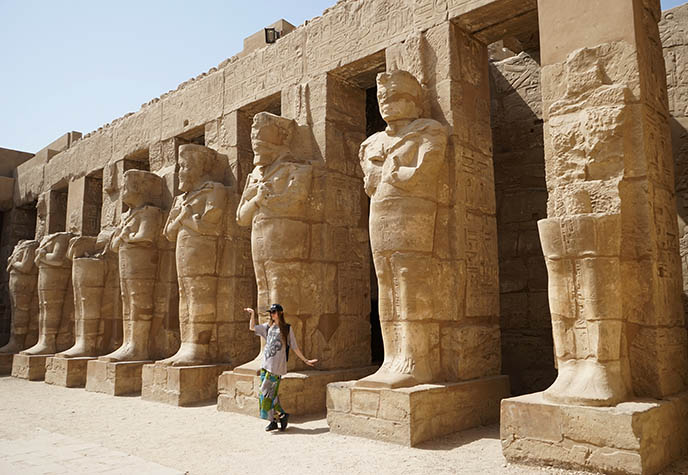
Yukiro and I took a million photos at Karnak Temple: it was one of the most impressive sites we visited on our journey. It’s not possible to grasp the full experience unless you come here for yourself — and I hope you do!

Throughout all of their tours, Travel Talk gives you the opportunity to join optional excursions, which span a variety of interests (food, culture, outdoors). Yukiro and I opted to do most of them, which we recommend. Who knows when you’ll be in Egypt again; best to make the most of it.
When we were in Aswan, we were excited to join a homestyle dinner in a Nubian village. We rode an Egyptian boat to get to Soheil Island, where the community is based.

At night, the weather drops — so pack a light jacket and layers for Egypt. We sailed on the Nile and passed this lit-up mound. It’s the Tombs of the Nobles, a burial site in Aswan from the Old and Middle Kingdoms that is still being excavated.

After walking though the village, we received a warm welcome from the Nubians. They’re descended from the ancient Nubians that lived along the Nile, in what is southern Egypt and Sudan today.

Nubia was one of the oldest civilizations in Africa, and they had an important trading role with the ancient Egyptians.
In the early 1960s, close to 50,000 Nubians suffered displacement due to the construction of the Aswan High Dam. They were forced to leave their traditional villages, which would be flooded, and resettle north.

However, the Nubians have proudly rebuilt their community here, and hold tight to their heritage. At the dinner, we got to meet the local children, and hear about the village’s lifestyle and traditions.

As you can see in this house, the Nubian colors, buildings, and handicrafts are distinct from the Egyptians.

Everyone eagerly awaited the signal for us to help ourselves to the spread of food, home-cooked by the Nubian family. The harira soup, with lentils a fresh lemon slice, was outstanding. We devoured the mixed rice, vegetable curries with okra and herbs, salads, and mandazi.

The Nubian feast was the best meal we had during our time in Egypt. The village cats certainly agreed, and gathered around in hope of food.

At the end of our tour, we joined a Bedouin cultural dining experience. At Dahab, we piled into the back of a four wheel drive, and drove through the desert to an area surrounded by sandy hills and stars.

We sat around the fire, and drank hibiscus tea. Then, we helped ourselves to a spread of food from the back of a truck. The Bedouin people then played music on traditional instruments, and showed us how to play games (such as lying down with a cup of water on your forehead, and standing up without spilling it).
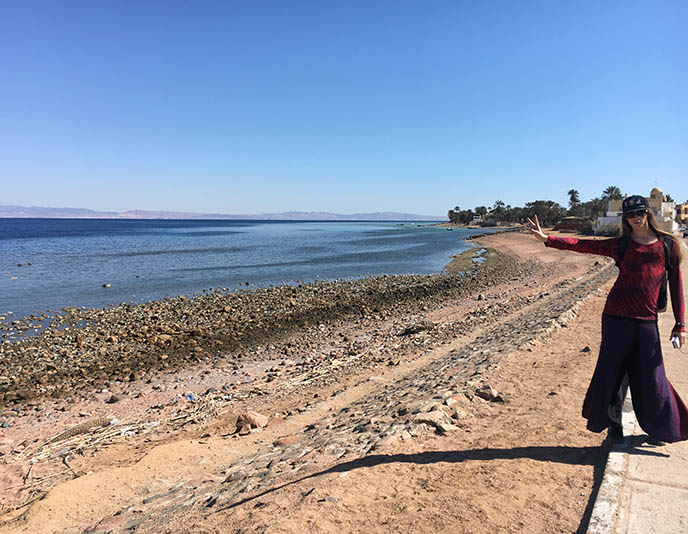
As you can see, we enjoyed a variety of places and activities through Travel Talk Tours. A typical tour simply takes you to the ancient ruins. However, our journey also included a relaxing stop in Dahab, a southern Egyptian beach town.

After a lot of time on the bus, it was a relief to unwind at Dahab Paradise resort. I had never heard of this part of Egypt, and wouldn’t have made it here without the tour.
I felt like Cleopatra as I lay poolside, with palm trees and looming hills in the distance. (Under multiple layers of mineral sunscreen, a giant hat, and an umbrella of course!)

Dahab is known for its excellent diving and snorkeling, especially at Blue Hole. The other members of our tour group took part in optional activities like a Jeep safari, quad biking, camel rides, and snorkeling in the coral reefs. We Goths were to happy to relax at the hotel, and watch 1980s horror movies in our room!

Cheers (with a glass of Egyptian wine) to Travel Talk Tours for opening our eyes to the many wonders of Egypt.
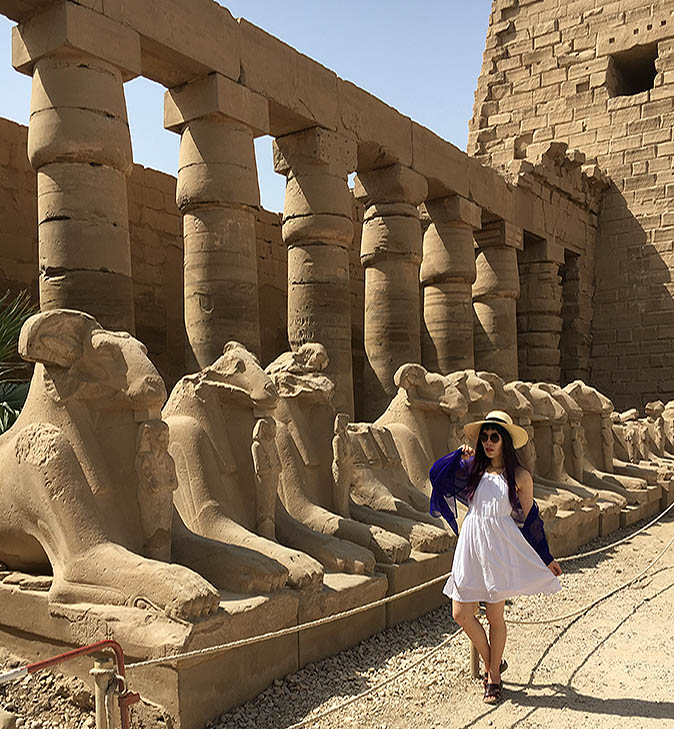
“Ay oh whey oh, ay oh whey oh
Walk like an Egyptian…”
Did this photo diary make you keen to visit Egypt? More from our journey to come soon, including the Valley of the Kings and Abu Simbel! If you have questions about anything at all, feel free to leave a comment in this post and I’ll let you know my thoughts right away.
SHARE & COMMENT
Renting an apartment with Eiffel Tower view! Paris Perfect rentals review, Paris Pass museum passes, Le Corbusier house.
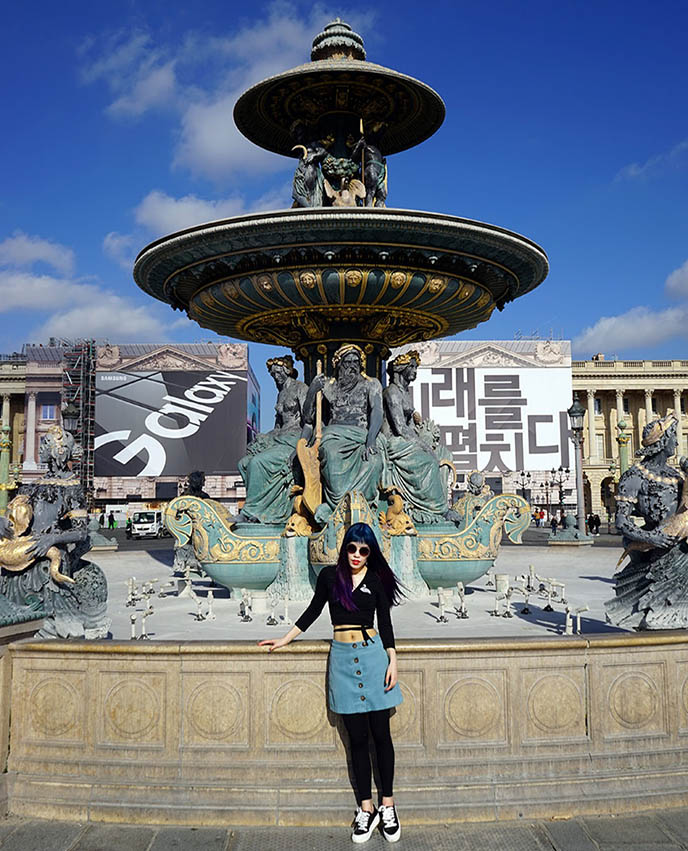
Paris, it’s been a while! I’ve visited the “city of lights” twice before, but this was before starting this blog. At long last, I got the chance to come back and share some alternative travel stories with you.
Of course, we’ll creep into the Catacombs, and look for vampires in Pere Lachaise cemetery. However, we’ll start with a photo diary of Paris’ beautiful museums and architecture. (Above is a stirring example, The Fontaines de la Concorde.)
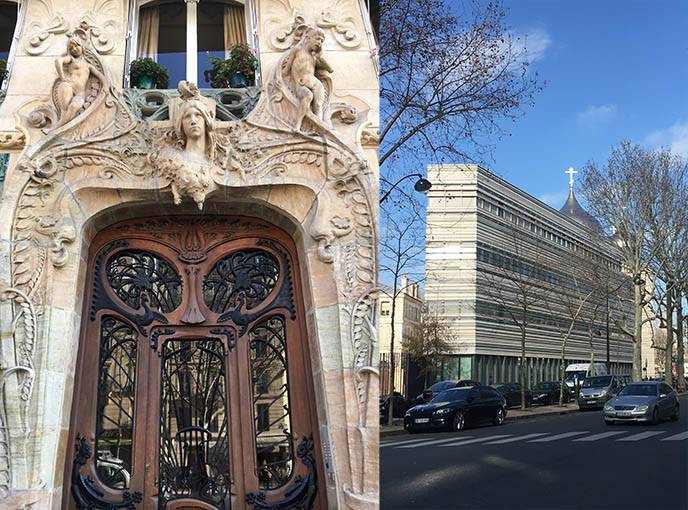
If you’re an art / architecture / culture lover like I am, then you should consider Paris as a travel destination. I could spend hours walking through the various arrondissements, admiring the diverse styles from throughout the centuries.
From the ornate Art Nouveau doorway at 29 Avenue Rapp, to the shiny new Russian Orthodox cathedral, there’s so much to take in.
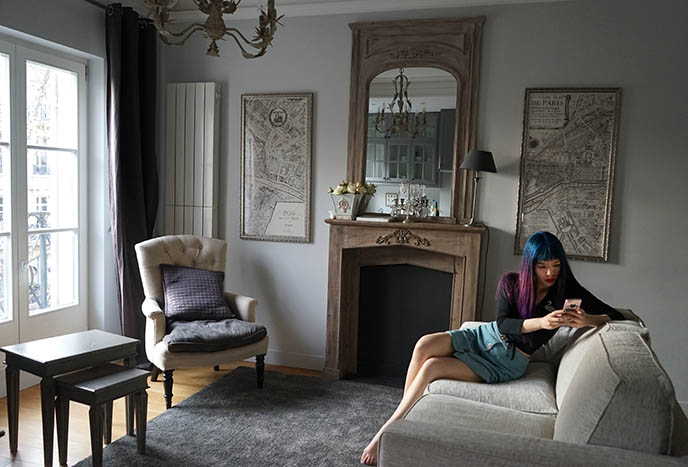
In this spirit, I looked for elegant accommodations straight out of a French fantasy. The moment I scrolled though Paris Perfect‘s apartment rentals, I knew I’d found my Parisian home.
The photo above captures the magic of my Chambertin apartment. The spacious flat is outfitted with carved fireplaces and chandeliers, and French balconies that open out to a view of the Tour Eiffel!

It’s a joy to browse the short-term vacation rentals at ParisPerfect.com: you can search by size and location, and see gorgeous photos of the interiors. Booking online is easy, and the company has an office near the Eiffel Tower where you can store bags if needed. A team member always greets you when you check in, and answers any questions you might have.
(I’m wearing a Valfre ballerina wrap top and blue En Creme skirt, both from Forest Ink.)

I settled into Chambertin with a glass of wine (Paris Perfect kindly left me a bottle and snacks). I ran a bath, and soaked in this claw-footed tub while looking out at the Eiffel Tower… “comme la vie est belle.”
(At night, you get a brilliant view of the Eiffel Tower, which twinkles with lights.)

The apartment rental has a fully equipped kitchen, so you have the option to cook meals at home. I caught up with an old friend in the cozy living room, and worked on my laptop at the dining table (every Paris Perfect apt has free and fast WiFi).

Ah, I miss having a morning coffee in this spot! My friend and I would go around the corner to get croissants or French onion soup, and stroll through the nearby parks.
If you’re looking for a special stay in Paris, seek out a local experience rather than a standard hotel. As you can see, my Paris Perfect accommodations were… perfect, and I’d book with them again in a heartbeat.
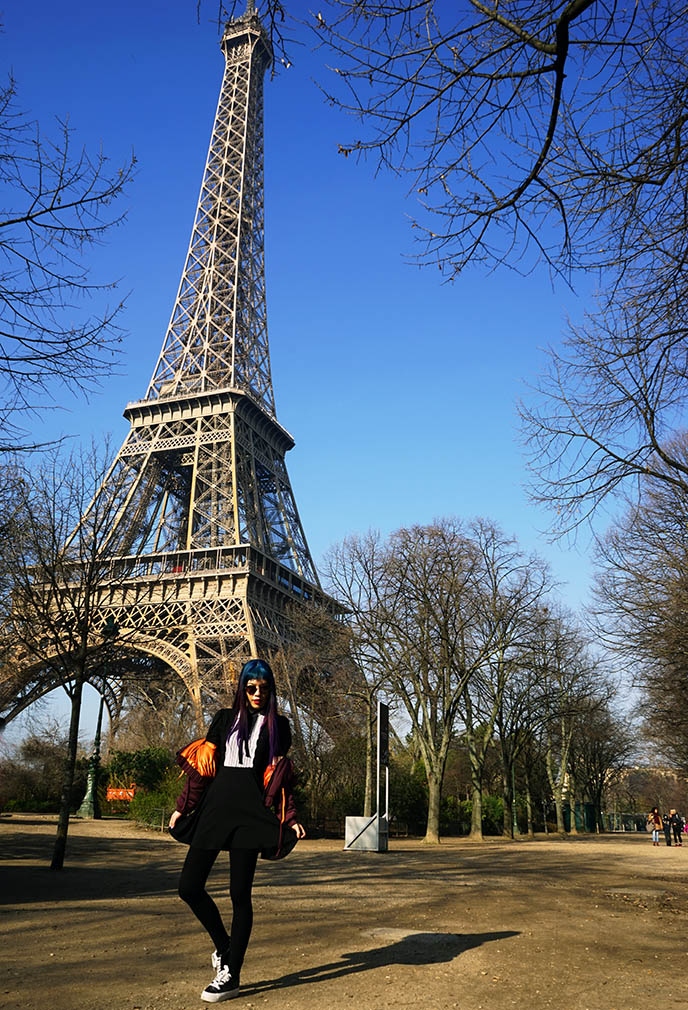
My apartment rental was near many metro stops, which was convenient for exploring the city. And it was only a few blocks away from the Eiffel Tower!
I dressed in French fashion for the occasion. My black and white Jolie dress is by Valfre, from Forest Ink (they carry many alternative, grunge and edgy designs by various brands). My leggings and silk bomber jacket are Charli Cohen.
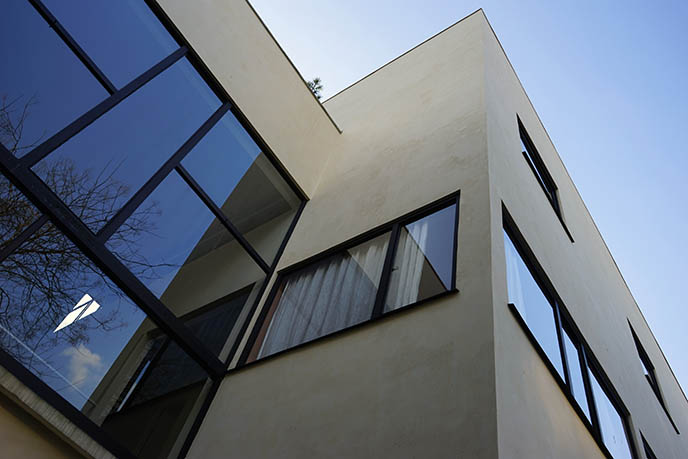
With the kind assistance of Paris Tourist Office, I got a private architecture tour of Le Corbusier’s modern buildings. Anyone can visit Fondation Le Corbusier, an archive that honors the pioneering French-Swiss architect.
We began at Maison La Roche, which is a semi-detached house designed by “Corbu” and Pierre Jeanneret between 1923–1925. Originally the home of a banker / art collector, the villa is now a museum that holds thousands of the architect’s drawings and photographs.
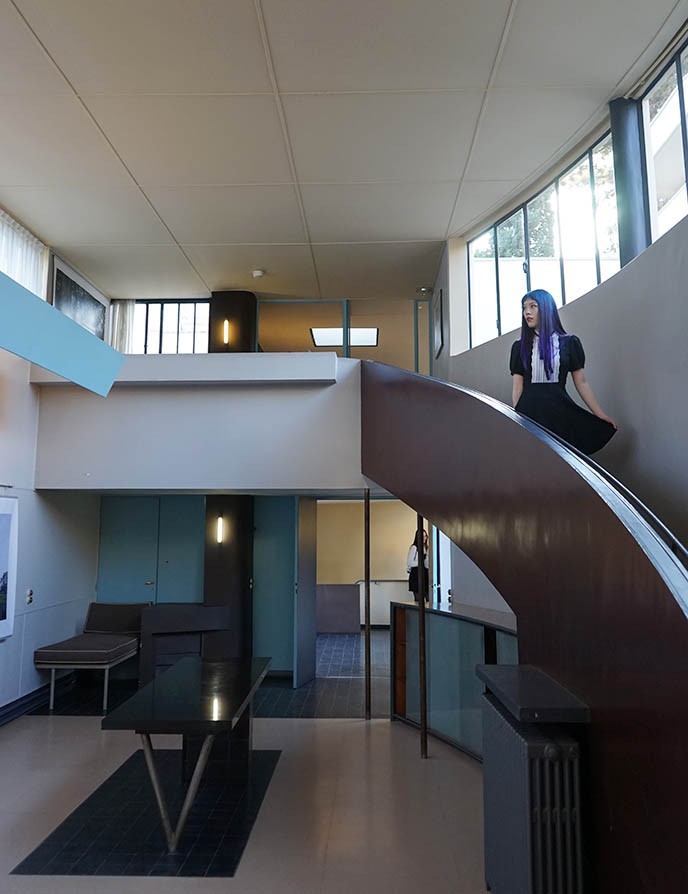
I loved seeing the smallest details, such as the light switches and furnaces, designed for Maison La Roche. Le Corbusier’s custom furniture complements the horizontal windows, which fill the rooms with light. A steep, curved ramp swoops up from the avantgarde art gallery to the library.
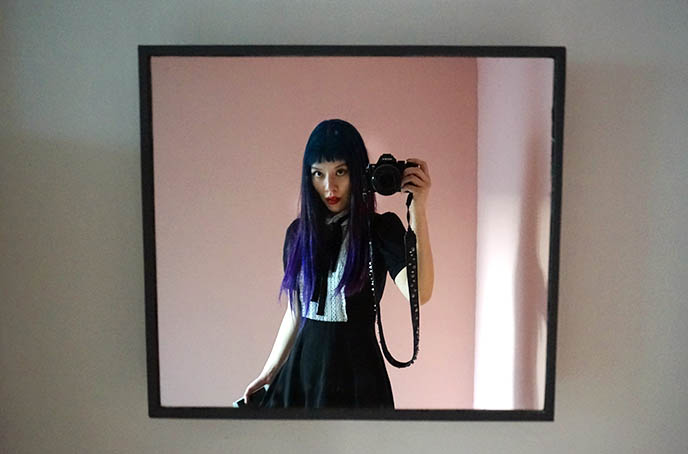
Self portrait in the pink bathroom, wearing Valfre.
Wandering through the grid-like spaces of Villa La Roche truly lets you get a sense of Le Corbusier’s genius. There’s so much more to be said about this UNESCO site; if you’re intrigued, you can check out the Fondation’s detailed guide to the home here.
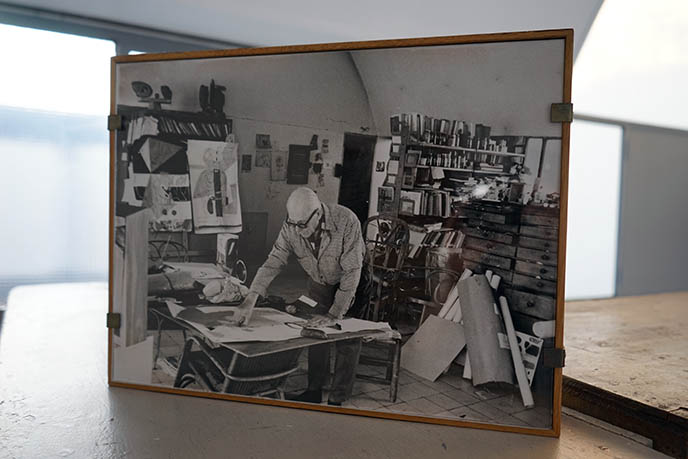
Our docent also took us to the nearby Paris studio-apartment, where Le Corbusier lived and worked from 1934 to 1965. Although Charles-Édouard Jeanneret (his birth name) is best known as an architect, he was also a prolific writer, artist, and urban planner.
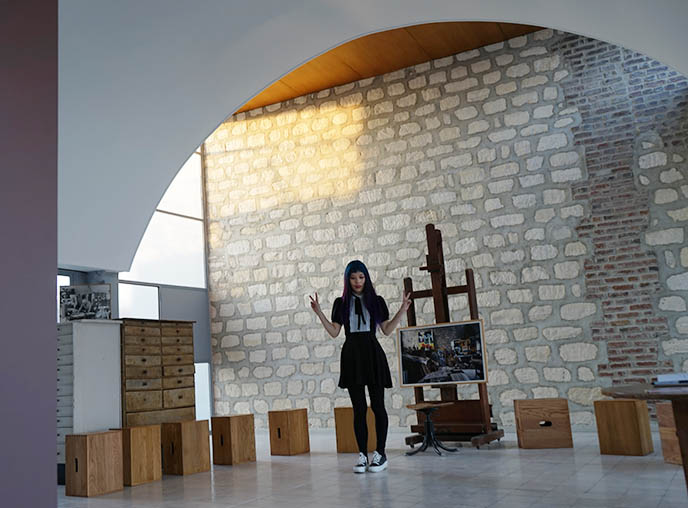
Located on the top floor of Paris’ Molitor Building, the open spaces, supporting columns, and floating facades are quintessential Corbusier. The artist modified the wall colors over time, and added shade panels since the windows let in a bit too much light.
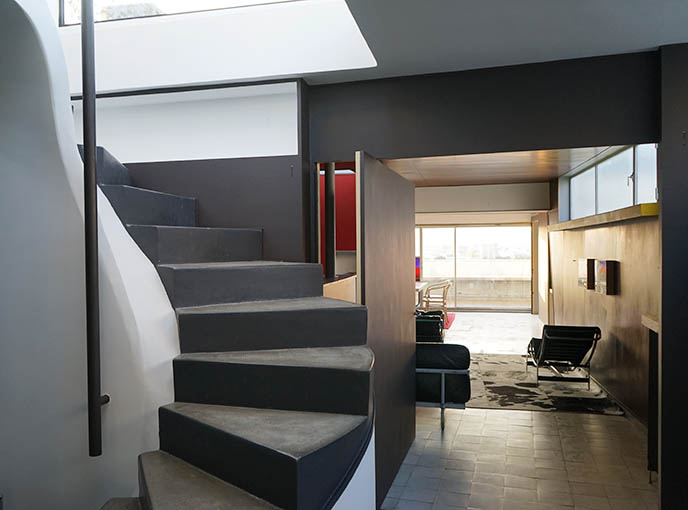
The pivoting wood door allows you to define the space. Walk up the curving staircase to the terrace, or enter the living room painted with unexpected blocks of primary colors.
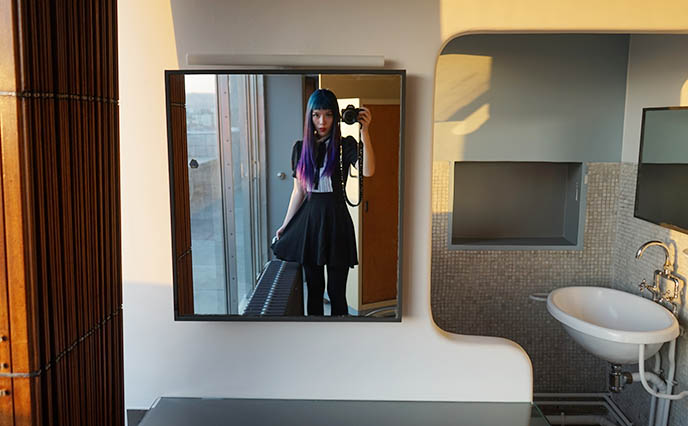
Some of the studio-apartment’s elements are on the odd side, like a giant elevated bed designed to maximize the view when one is lying down. The bathroom features space-age curves, and the cramped shower looks like a cocoon.
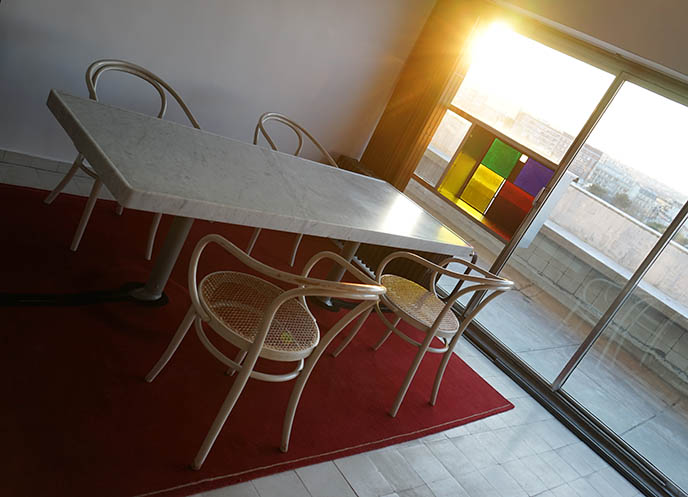
Le Corbusier filled the apartment with art objects from his travels. He designed much of the furniture himself, such as these curving chairs and marble dining room table. According to his wife, he was inspired by a mortuary slab that he saw in a dissection room!
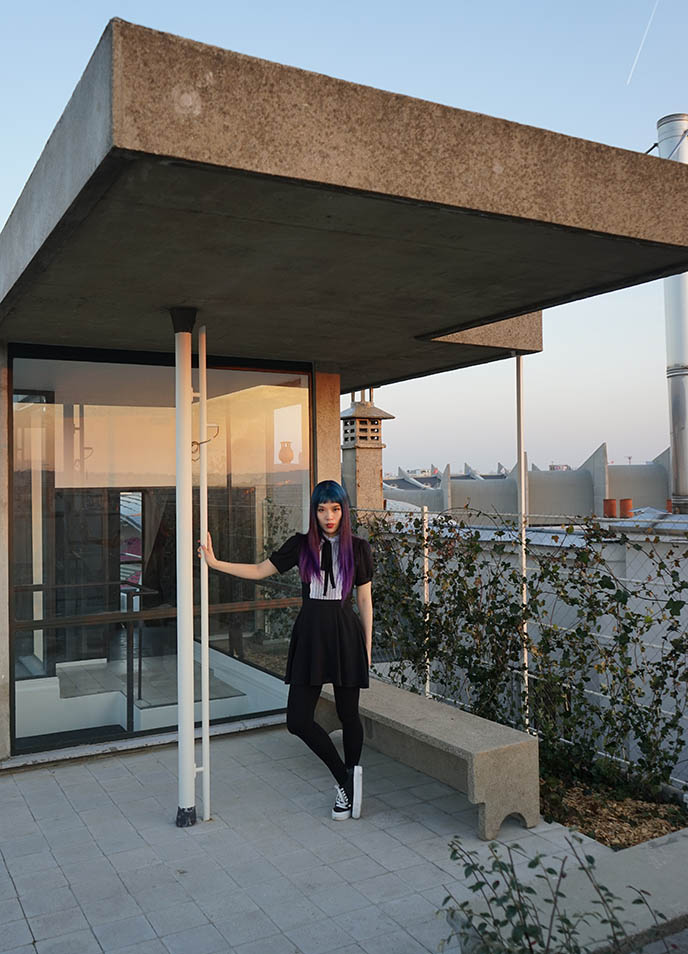
We walked up to the rooftop garden as the sun was setting. Concrete planes, surrounded by plants… Corbu was very much ahead of his time.
Here’s a detailed PDF from Fondation Corbusier for more details about the studio. Hail Le Corbusier!
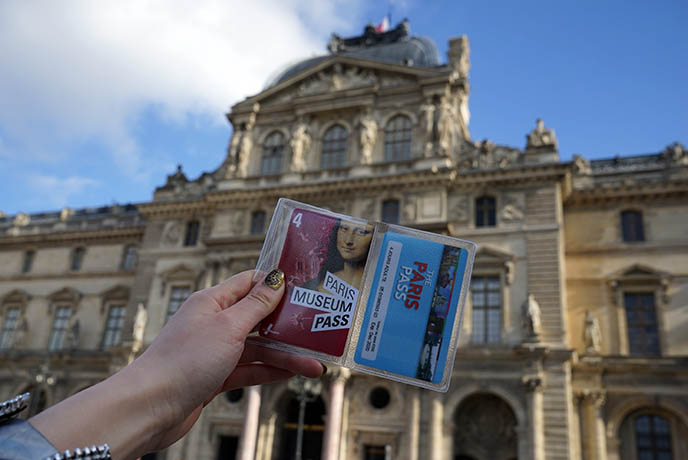
Since I was keen to visit many museums while in the city, I got a Paris Pass. This sightseeing pass is well worth the value, as you get immediate access to over 60 travel attractions. The Paris Pass also includes a TravelCard for unlimited public transit on the metro, RER trains, and buses.
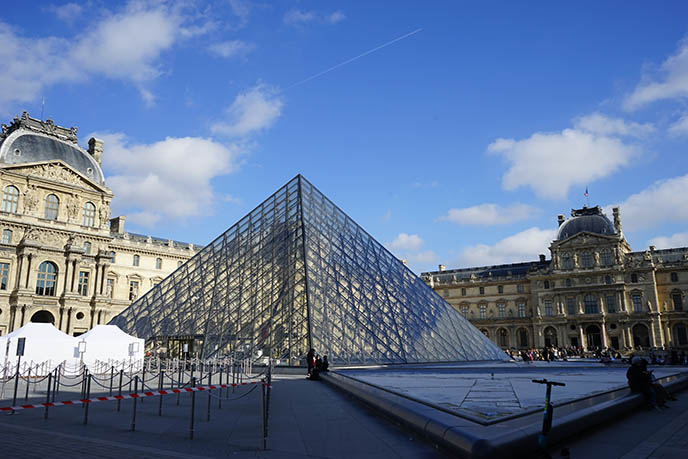
Since I had the Paris Pass, I could use the “fast track” line at top museums and monuments — like the Louvre. The world-famous glass pyramid always has a long line-up, but with The Paris Pass, you can go straight in.
I only had a short time in Paris (as I was here on my way to Cairo). The Paris Pass let me maximize my time and enjoy the sights, while saving on entry fees.
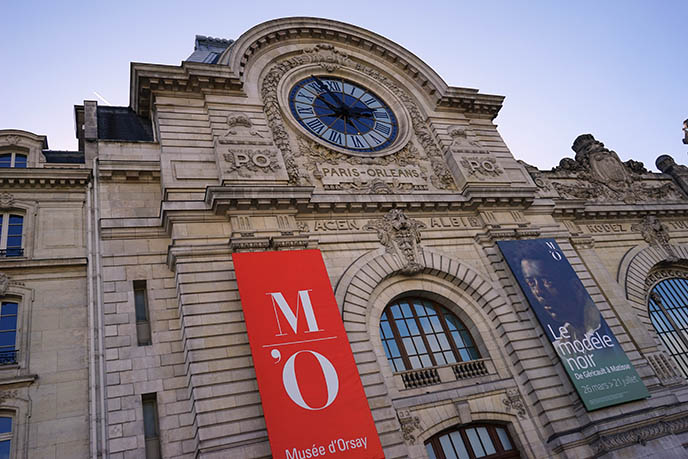
You can choose to get The Paris Pass in 2, 3, 4 or 6 consecutive day lengths. The booklet is mailed to you; simply activate the card by scanning it at the metro or at your first attraction.
When I saw the long line outside Musee D’Orsay, I was relieved I could simply waltz in — and no need to shell out the €14 ticket fee! (If you’re seeing a few attractions a day or taking public transport a lot, the Paris Pass more than pays for itself).
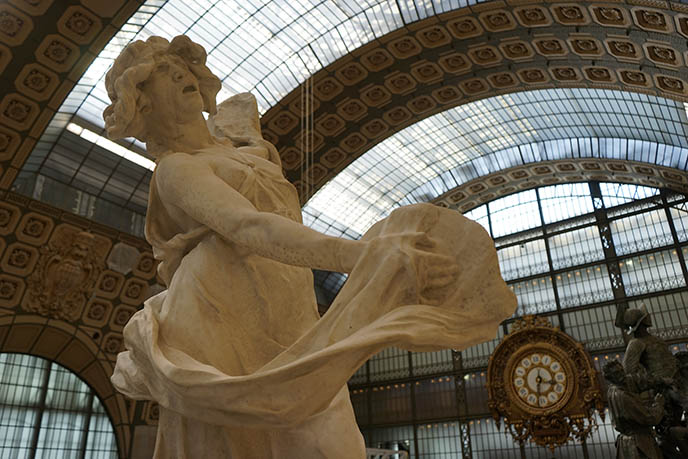
It was my first time at this art museum, which is set inside the glorious Gare d’Orsay. The railway station was built between 1898 and 1900 in the Beaux-Arts style. Today, these original glass and ceiling details have been painstakingly preserved.
Le Musee D’Orsay focuses on French paintings, sculptures, furniture, and photos from around 1850-1914. It contains the world’s largest collection of Impressionist and post-Impressionist works, by artists like Manet, Monet, and their brethren.
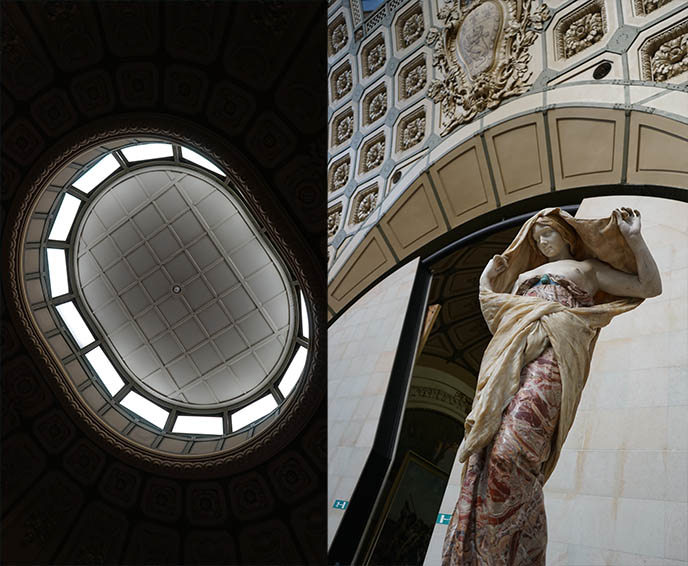
I was especially intrigued by the station architecture (featuring long ramps and industrial staircases). I enjoyed seeing lesser-known large scale works, such as French Symbolist paintings with trippy themes.
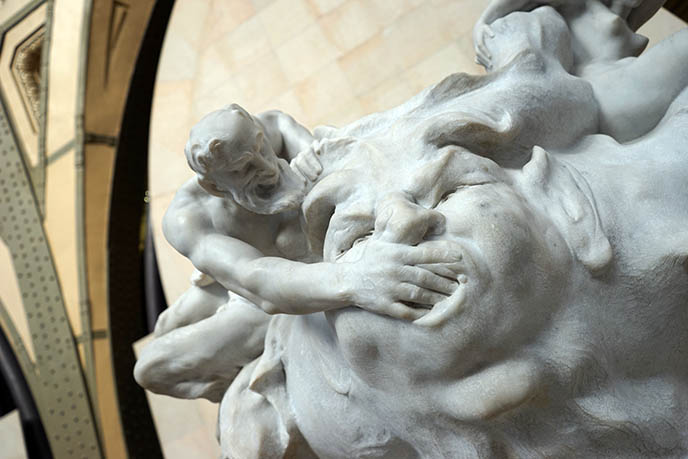
You’ll find Mondrian, Degas, Delacroix, Rodin, and Gauguin among the Orsay artists. I got a kick out of the dramatic carved statues found throughout the open spaces — like this devilish detail.
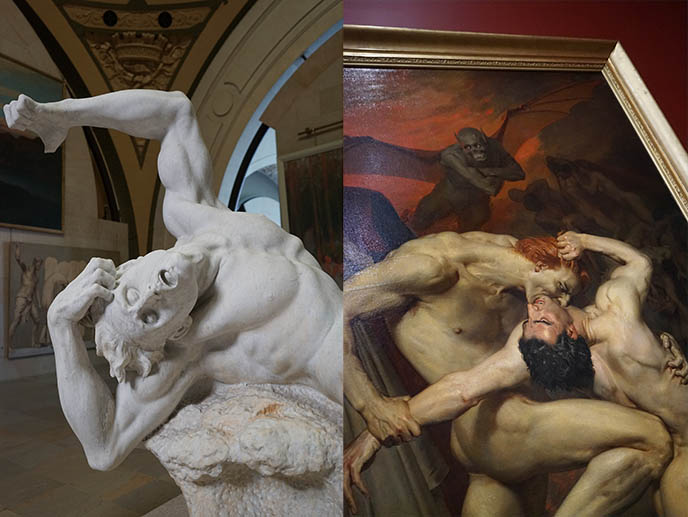
Yes, you can see placid waterlilies here. Or you can find tormented poses, and a vampiric bite while Satan flies through the red sky!
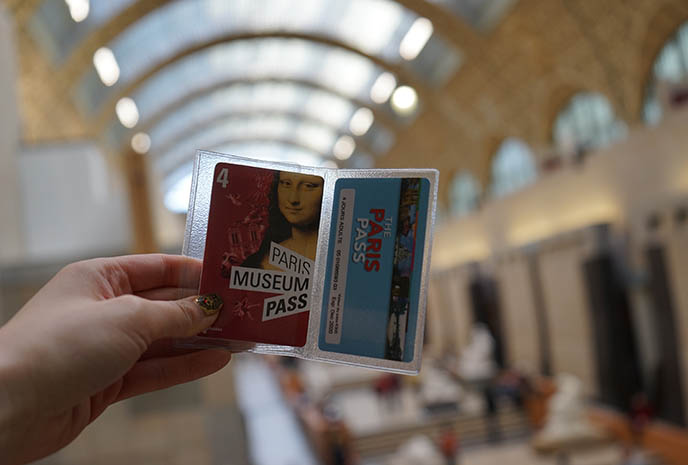
The Paris Pass made it possible to cut the queues and save on ticket fees. On their website, you can see the full list of museums and activities that the sightseeing pass covers. The Paris Pass also includes a free hop on/off Big Bus day tour, and discounts at restaurants and shops.
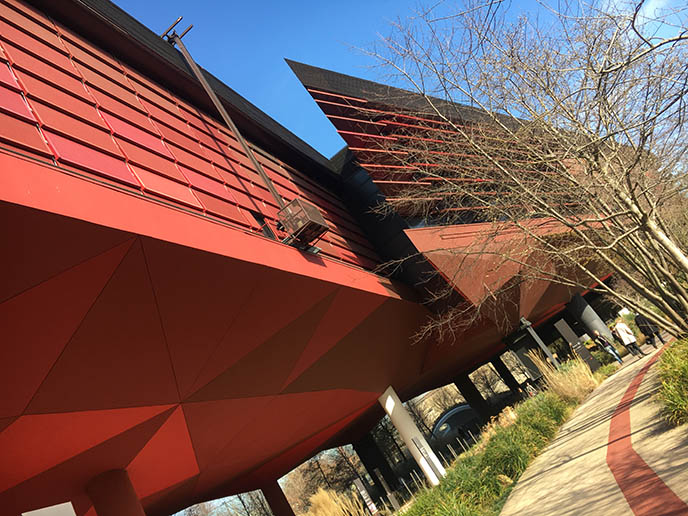
You can make the rounds of Arc de Triomphe, Panthéon, Musée Rodin and dozens more with the Paris Pass. I enjoyed the opportunity to visit lesser-known museums, like the Quai Branly – Jacques Chirac. Since entry is included with the pass, why not check it out?
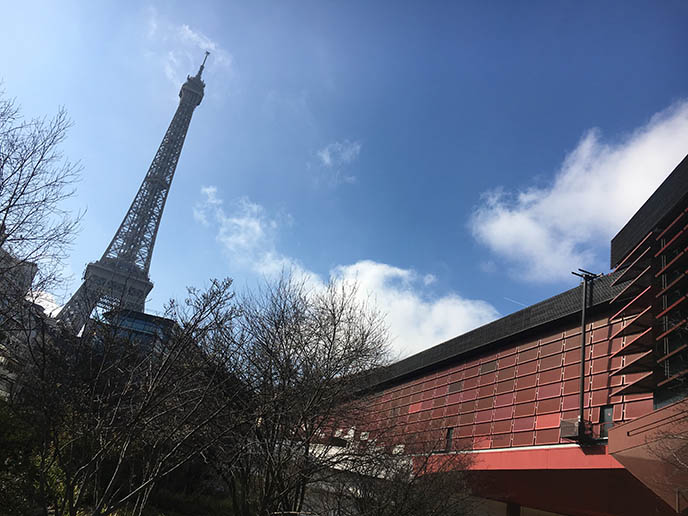
Next time, I’ll use The Paris Pass to go up the Eiffel Tower, and do a wine and cheese tasting…
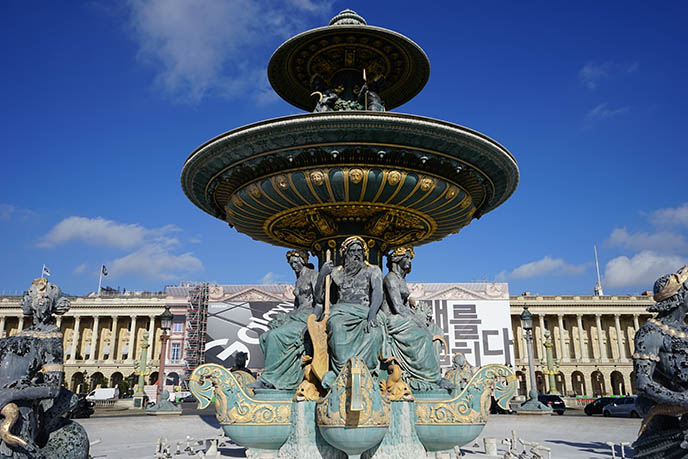
The entire city feels like a museum. Even though Paris is such a popular destination, I was swept away by its charm.
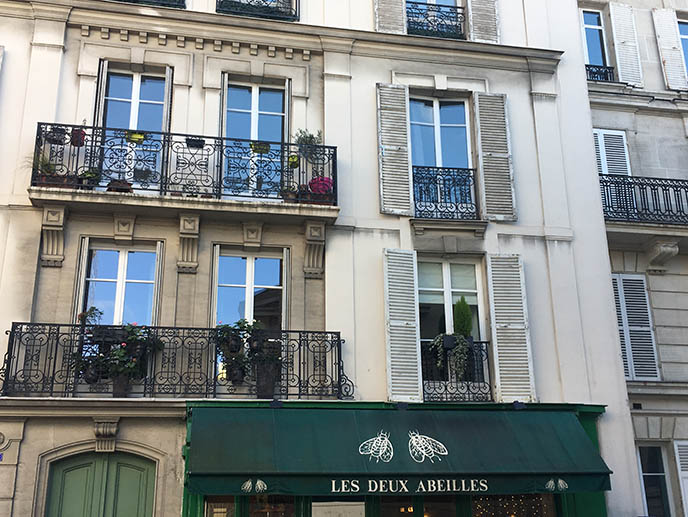
Look up and admire the details found in each neighborhood.
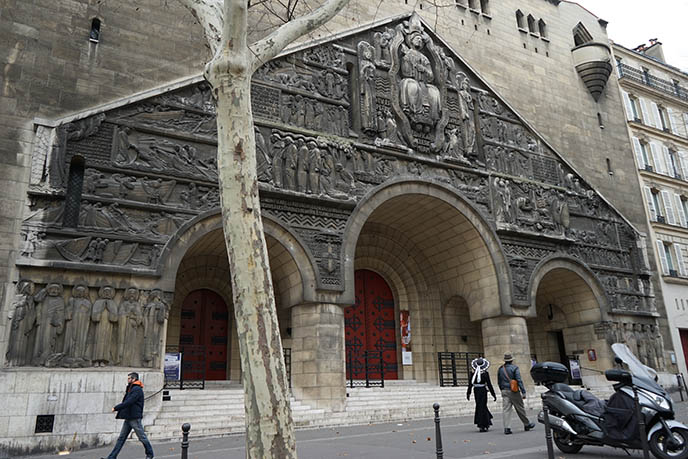
It’s fun to people-watch. Check out the black and white outfit worn by the lady outside Saint Pierre de Chaillot church.

In Paris, sometimes the “tourist” things are the best things to do. Take a stroll along the banks of the River Seine, and duck into the Jardin des Tuileries.

And eat. Indulge in Laduree macarons, get fresh croissants from a local bakery, and try a sampling of cakes at Angelina.
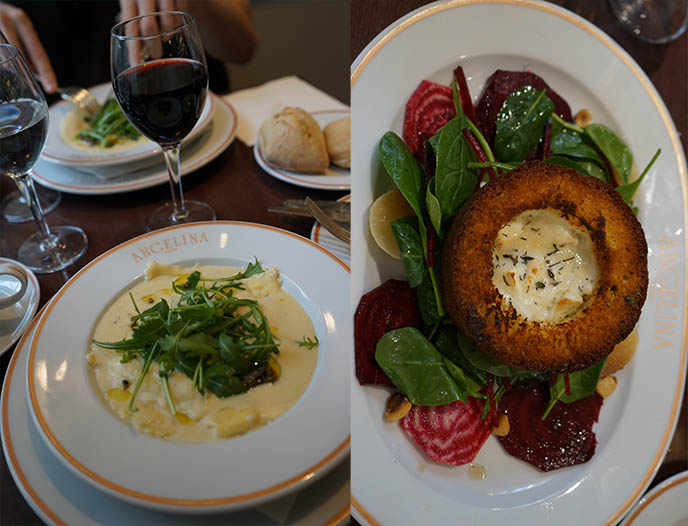
Linger over a meal at Angelina’s cafe in Galleries Lafayette. Cheese and beet salad, cheesy pasta, and multiple glasses of red wine.
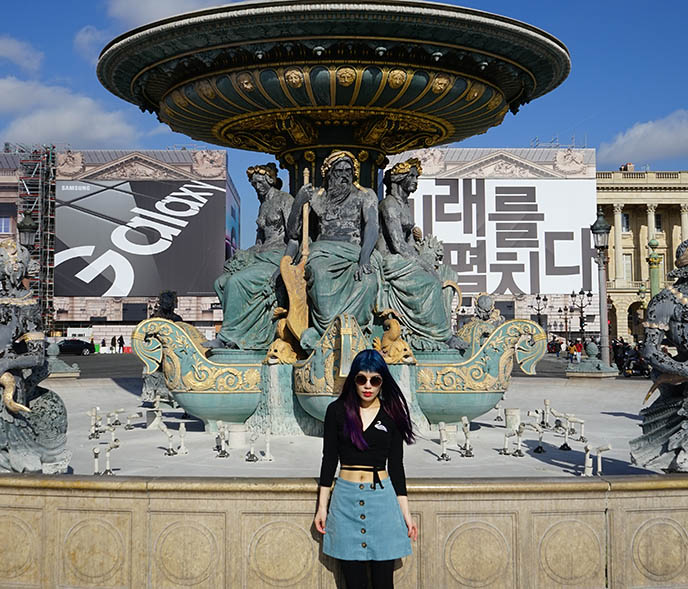
Paris, je t’aime. Merci Paris Perfect for the lovely stay in Chambertin apartment; I can’t wait to return.
But how about the Gothic side of the city? That’s coming up next. Catacombs, French absinthe and graveyard haunted by vampires… A bientot!
 LA CARMINA
LA CARMINA






